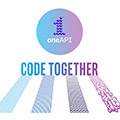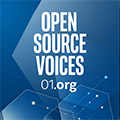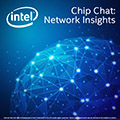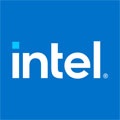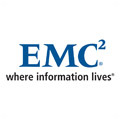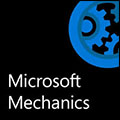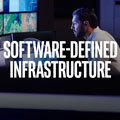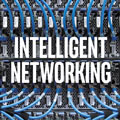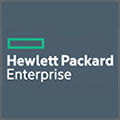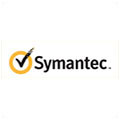FinOps and AI Optimizes IT Resources
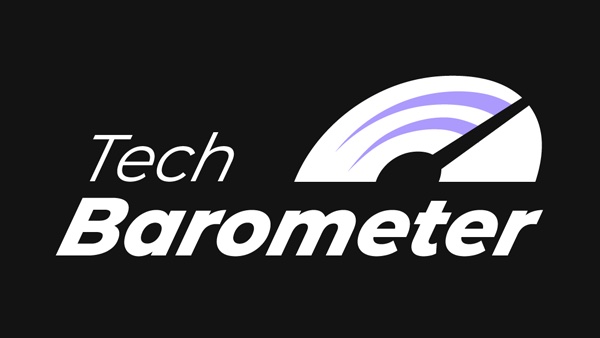
In this Tech Barometer podcast segment, Mayank Gupta, director of product marketing at Nutanix, explains how intelligent FinOps tools automatically detect optimizations and take corrective action to manage cloud costs, track carbon footprints, and meet regulatory requirements in the AI era.
Find more enterprise cloud news, features stories and profiles at The Forecast.
Transcript:
Mayank Gupta: How can we make FinOps itself a lot more intelligent, now that we have Gen AI, can intelligence be built into the system where it automatically understands usage patterns and takes action to bring it down?
Jason Lopez: Generative AI is transforming how organizations manage cloud and IT spending. Although it brings new costs and it also affords new opportunities for automation. This is the Tech Barometer podcast, I’m Jason Lopez. On today’s edition: FinOps, bringing together finance, engineering, and business teams to manage cloud computing costs. This is increasingly important for optimizing IT resources in the age of AI.
Mayank Gupta: A lot of companies are getting into a hybrid multicloud environment as they’re using GenAI.
Jason Lopez: Mayank Gupta, Director of Product Marketing at Nutanix, tells The Forecast editor-in-chief Ken Kaplan how FinOps is evolving with better observability and automated cost controls.
Mayank Gupta: They are realizing that they have to actively track these dollars they cannot just use and run this forever without having some sense of accountability.
[Related: AI is Hungry for Data, But Can IT Infrastructures Keep Up?]
You used to just track your CPU storage. Now you’re tracking one more resource, which is your GPU. Similarly, when it comes to training and inference, whether you’re running on prem or whether you’re running on the public cloud, a lot of these FinOps tools have to have insights into your training cost and inferencing cost. Training models can be a very expensive proposition. So we are building that in the tool, and we’re building these new features into our cost governance models, where we are seeing something which has come into the industry, going to be there for the very long haul. Let’s bring in those models and have that. The other very interesting side of this business is, how can we make FinOps itself a lot more intelligent now that we have Gen AI? Can intelligence be built into the system where the system automatically, through agents or through intuition, through learning, understands, hey, this is the usage pattern. And if it’s deviating from them, let me take some action automatically and bring it down. How can we make the job of an IT admin or a FinOps admin easier, getting all these signals from different places? And now we have AI to help. We can distill these signals in something which is easily digestible. Even on the actions that need to be taken off, the user can say, hey, take these actions based on a set of best practices, and now Gen AI can help with them. So we are looking at, how can GenAI make it more effective?
[Related: Performance Engineering in the Age of AI]
Ken Kaplan: Let’s talk about maybe the biggest challenges of your customers, the biggest challenges that come to mind and you hear all the time.
Mayank Gupta: Certainly I think what’s happening a lot is customers have their on-prem infrastructure, which is their data centers. They might have stuff on the edge. They definitely have stuff on the public cloud. How do I have visibility across public cloud, edge core data center visibility is the first step in you controlling your cost. The second big step is having an accountability and doing the due diligence of let’s put this set of dollars to this account. Let’s set this dollars to this account. Who’s using what and where? That’s the second important step. Once you have the visibility, once you have the accountability, how do you make sure you’re optimizing those dollars? How do you set constraints and limits on those dollars? There has to be a sense of checks and balances that, and this is the industry term for this is a showback. We’ll show back to you how many dollars that you’d use. Right? You might not pay me for that, but at least these are the resources that you’re consuming. And then we optimize this, right? If you are wasting dollars, let’s bring those resources down. If something is not needed, let’s turn it down. That’s the third very important step where we make sure that nothing is being wasted.
[Related: How Ivy League Dartmouth College Moved to a Future-Ready IT Platform]
Ken Kaplan: You do a lot of webinars, and you talk with professionals and also customers. (3:12) Are there some stories that come to mind about how they’ve applied FinOps?
Mayank Gupta: I was talking to a Philadelphia utility and the cloud bill just from one vendor had 160,000 line items of different services each costing something else, and they were getting overwhelmed because they could not A understand, and then B, how do I optimize this? So having a solution, having a product, having a tool that can ingest all this information, tag it appropriately, and then automatically give you suggestions on, Hey, you know what? These are the resources that can be reduced or eliminated or optimized. That is something which everybody needs, and I think that’s just one use case. And across the board, every single time they started using our product and they realized that it was a lot easier when we tagged things under services and we said, Hey, this is your storage. This is your load balances. These are your VMs. These are your containers in a graph format, and this is where you can optimize.
And they were able to click and right-size things. So that’s one example. The other case where I’ve talked to customers, 80%, in fact, I think it’s 83% of Nutanix customers have not just their on-prem system, but they also have multiple hyperscalers. So these are multiple public clouds because all of these vendors have different clouds. The ability to see all of this in one single place is a great benefit for these vendors, and that’s what finops tools provide them. You have the ability to see every single thing in one single place. That’s a fun conversation for me to have. If you had this visibility, what would you do? And they say, oh, you know what? That would make me so much more empowered. That’s what I see every single time.
[Related: Search for VMware Alternatives That Meet Existing and Future Needs]
Ken Kaplan: Do you see FinOps, does it help with other parts of budget control, like sustainability issues, energy consumption? And do you see FinOps maybe evolving to other places such as that?
Mayank Gupta: Yeah, a lot of our customers are seeing that, hey, we are a little mindful of their dollars. People are being mindful of their carbon footprint. And this is all coming together. So you bring a great point, Ken, that yeah, people are bringing it together and people want to see, hey, this is another evolution in me seeing off my costs, my carbon footprint, and all of those things. Yeah, absolutely.
Ken Kaplan: Yeah, it feels like maybe it starts to move into this regulatory area where you have to report out certain performance of your business and maybe FinOps helps contribute to those pure reporting that needs to be done.
Mayank Gupta: Yeah, no, absolutely. (5:50) There are regulations with some time-bound periods where these reportings are going to be as a part of your regulatory planning. (5:57) Just as you file your quarterly Q1 reports and 10K reports, this will come in there, right. (6:01) So a lot of our customers are getting ahead of the curve and they are asking these things, not just for FinOps, but also for their carbon footprint. (6:09) And that’s why a lot of vendors are actively working to build that into their dashboards and their metrics that they track, yeah.
[Related: Composable Data Centers That Power Enterprise AI]
Ken Kaplan: Yeah, I mean, anything you want to say to people who are just getting into FinOps? (6:21) How do you see this evolving.
Mayank Gupta: A lot of people think that, Hey, you know what? This is a rum part of business, I kind say is that this is the kind of business which your CIO, the CFO, and don’t be surprised, even the CEO would actively track. So it’s a great line of business to be in because this does touch the bottom of the company, the dollars that you save, other dollars that can be applied in other parts of the department. So it’s a great field to be in. A lot of companies are getting into a hybrid, multi-cloud environment. As they’re using genai, they are realizing that they have to actively track these dollars. They cannot just use and run this forever without having some sense of accountability as the regulations for carbon, as the regulations for cost come even more mandatory than in that regards. It’ll be a more exciting field to run. There’ll be always more to be done, and there’s always be an opportunity to be in the limelight because you’ll be saving your company dollars and saving your line of businesses dollars, and you could be the hero.
Jason Lopez: Mayank Gupta is Director of Product Marketing at Nutanix. He spoke with The Forecast’s Ken Kaplan. Learn more about managing FinOps with Nutanix Cloud Manager software. Search Nutanix NCM Cost Governance. This is the tech Barometer podcastI’m Jason Lopez, Check out our other stories at the forecast website which you can find:
nutanix.com/theforecastbynutanix
Posted in:
Audio Podcast, Cloud Computing, Tech Barometer - From The Forecast by Nutanix








